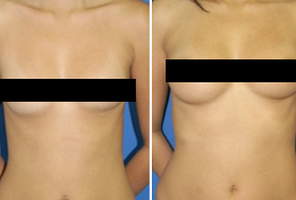What is Roux-en-Y Gastric Bypass surgery and what are the benefits?
Gastric bypass surgery may offer access to a more comfortable life and greater overall health and wellness for individuals that are severely overweight. When losing weight becomes challenging and weight affects overall health and lifestyle, gastric bypass surgery may assist with weight loss and help patients toward a new way of life.
Gastric bypass surgery requires significant lifestyle changes that affect consumption and a greater awareness of balanced nutrition. Most procedures involve the creation of a small stomach pouch to restrict food intake and the construction of an intestinal bypass which removes the duodenum and parts of the small intestine from the path of ingested food. This reduces the absorption of fatty foods as well as restricts food intake. The smaller stomach pouch usually holds about one ounce after the procedure is completed. This change may assist with weight loss over time and promotes greater overall health.
There are several different types of gastric bypass surgeries. Those include:
- Roux-en-Y Gastric Bypass (RGB) This procedure is the most common gastric bypass surgery performed in the United States. A small stomach pouch is created by stapling part of the stomach together, or through a method known as vertical banding. This limits the amount of food that may be comfortably ingested. Subsequently, a Y-shaped section of the small intestine is attached to the stomach pouch to allow food to bypass the duodenum and the first portion of the jejunum. This effectively causes reduced caloric and nutrient absorption in the body.
- Extensive Gastric Bypass (Biliopancreatic Diversion) This procedure is more complex than the RGB procedure for a couple of reasons. Firstly, the lower portion of the stomach is permanently removed, which leaves about half of the stomach remaining. This remaining portion is then connected directly to the last part of the small intestine, which eliminates both the duodenum and jejunum from the path of ingested food. With the RGB procedure, the stomach is not permanently removed; the path of ingested food is altered. With the biliopancreatic procedure, the portion of the stomach remaining is a bit larger, so more food may be ingested than with RGB. Furthermore, this procedure keeps the pylorus intact, which sits near the outlet of the stomach. This helps to prevent stomach contents from moving too quickly through the small intestine (commonly called "dumping").
Laparoscopic techniques (which involve a thin telescope-like instrument for viewing inside the abdomen) and other forms of medical technology used during surgery allow for minimal scarring and greater precision. When malabsorption and the restriction of food intake are combined, patients may experience weight loss results that are quicker or generally more satisfactory than would be possible with restriction operations alone. Individuals that choose to undergo weight loss surgery procedures that utilize both methods may lose at least two-thirds of their excess weight within a twenty four month period. Patients lose weight at unique rates however, and each patient has specific needs and challenges which may alter overall results.
What risks are associated with Roux-en-Y Gastric Bypass surgery?
With weight loss surgeries that remove portions of the stomach and/or small intestine, or change the path of ingested food, there are high risks for nutritional deficiencies. Weight loss surgery involves commitment and an awareness of everyday nutritional needs that can involve taking supplements and multivitamins more frequently than before. Patients are required to pay even more attention to nutritional needs to maintain good health.
Every weight loss procedure involves serious risks and possible complications. Several complications have been attributed to weight loss surgeries, including stomach pouch stretching, which may result in the stomach growing back to its normal size over time. Band erosion may also occur, which results in the disintegration of the band which closes off portions of the stomach. This may result in the stomach reverting back to its normal size as well.
Movement of or changes to the staples used during surgery to reshape the size of the stomach may result in a reversal of the procedure. Leakage of stomach contents is another serious risk which may result in damage to other bodily organs and tissue.
The premature movement of stomach contents through the small intestine can result in nausea, sweating, faintness, and diarrhea after eating (commonly called "dumping"), as well as the inability to process sweet foods without becoming extremely weak. Various changes in the types of foods and nutritional supplements consumed, as well as the quantities, may affect the digestive system and overall lifestyle of the patient.
There are various different risks associated with different methods used when performing weight loss surgery. A thorough discussion with an experienced weight loss surgeon may be the best way to gain greater knowledge regarding which procedures are best for certain situations. Each patient is unique and discussing weight loss surgery and goals in detail is the first step to fully understanding specific benefits and risks. Close monitoring and lifestyle changes are necessary to ensure the success of weight loss procedures.
Find a physician in your area to discuss weight loss procedures that may benefit you.
Frequently Asked Questions:
How will Gastric Bypass Surgery affect my eating habits?
What are some of the benefits of Gastric Bypass Surgery?
What other medical conditions may Gastric Bypass Surgery alleviate?
View Gastric Bypass Surgery FAQ's
Disclaimer: This information is intended only as an introduction to this procedure. This information should not be used to determine whether you will have the procedure performed nor does it guarantee results of your elective surgery. Further details regarding surgical standards and procedures should be discussed with your physician.
By OnlineSurgery Staff
Updated: October 12, 2008

